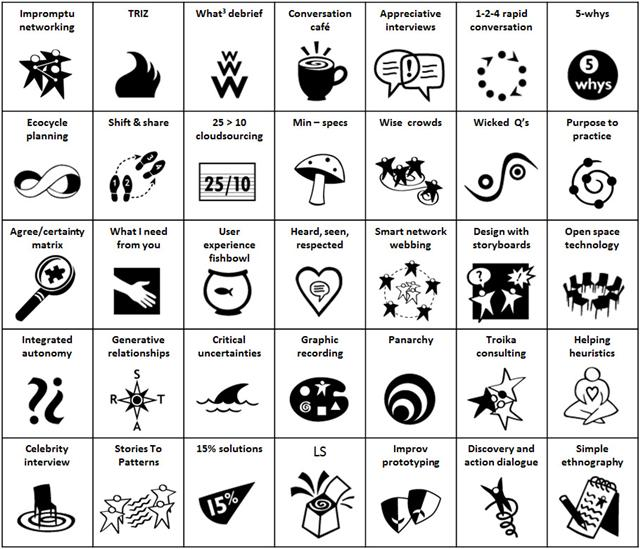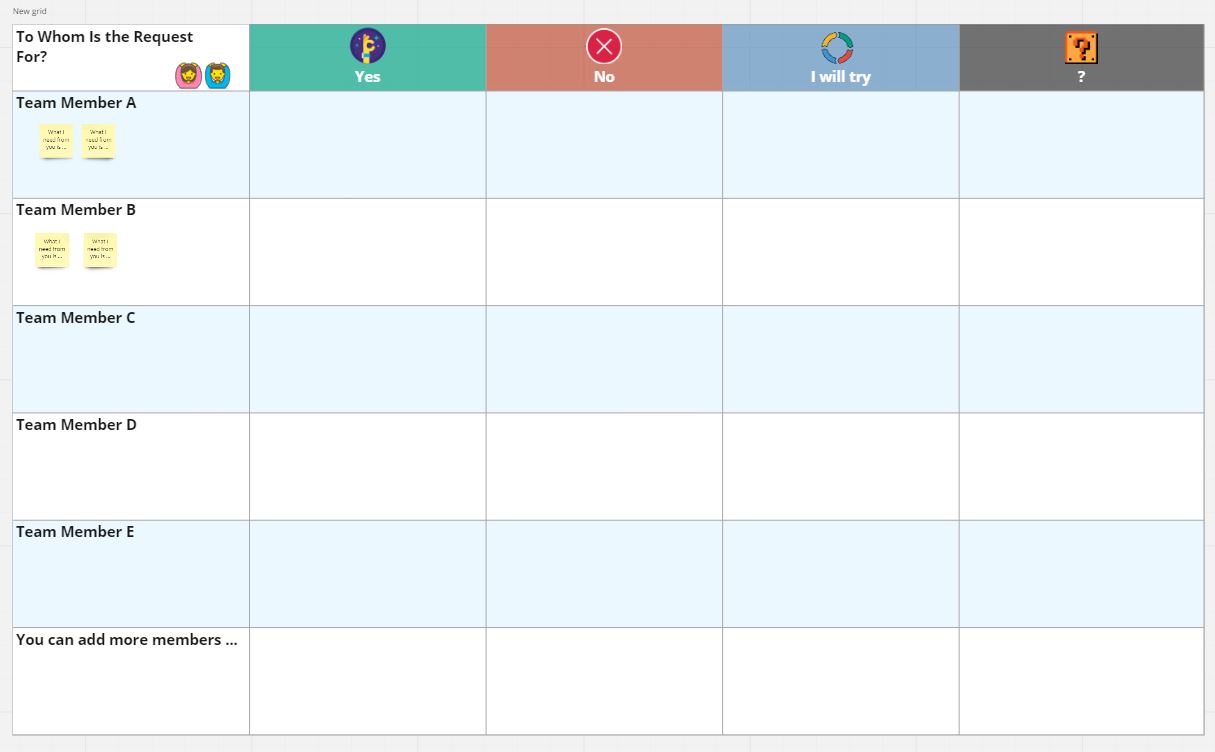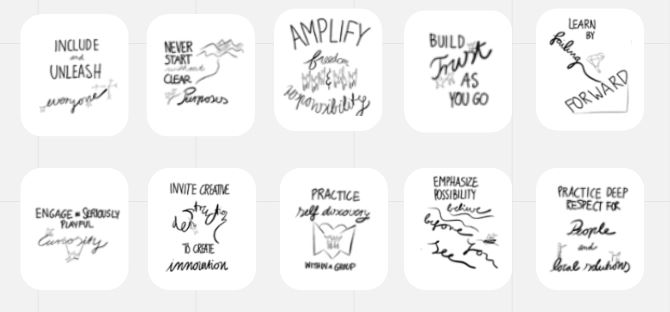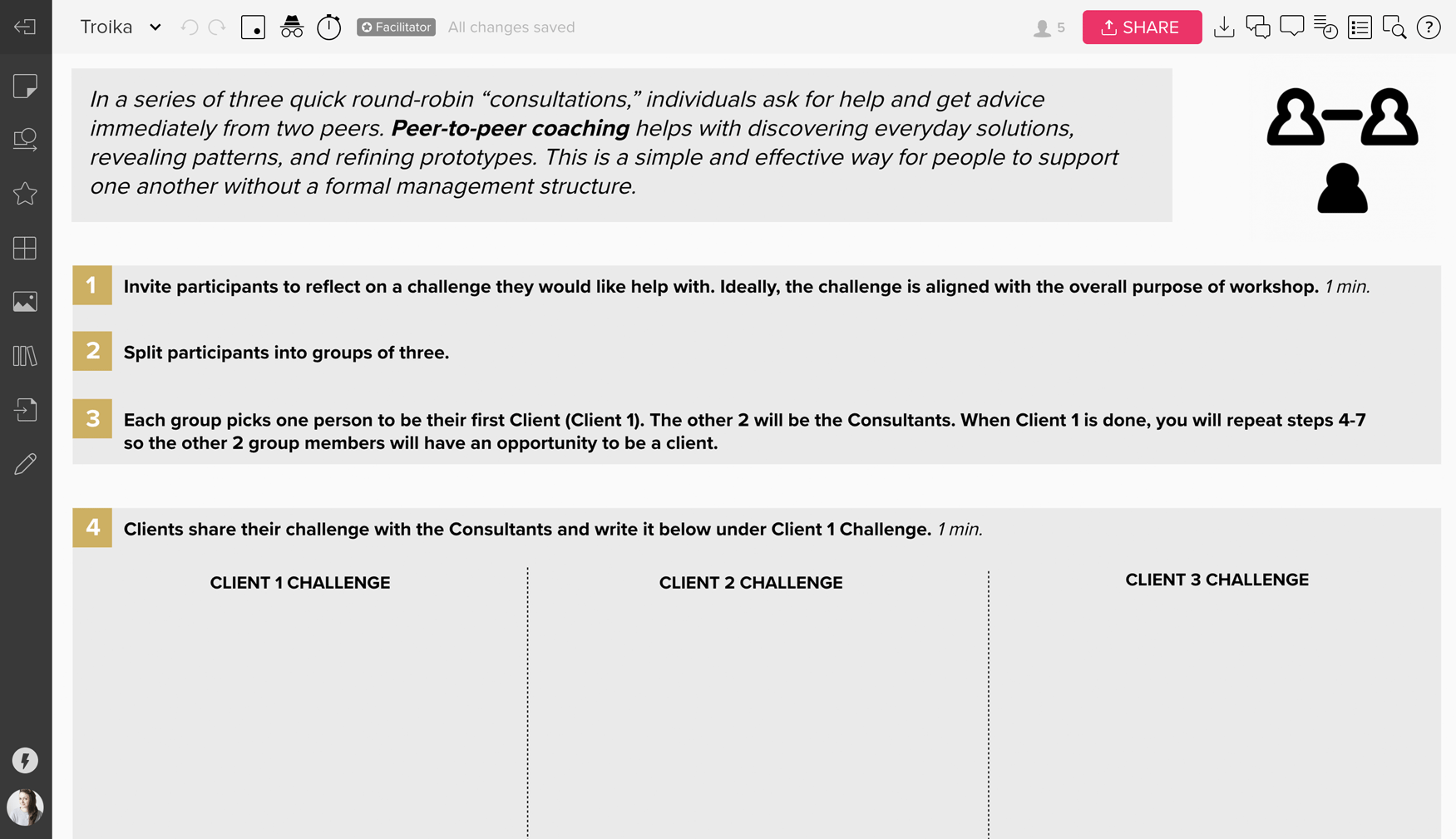Find Liberating Structures training resources and templates to get started with these unique innovative meeting methods.
Designing and facilitating innovative meetings with your team can be pressure-filled and time-consuming. Maybe your team feels burned out by a steady flow of all too boring meetings and other sessions, or you’ve left the room too often with nothing to show for it. If your meetings aren’t accomplishing organizational goals or building collaboration, it’s time to take them in an entirely different direction. Liberating Structures training or activities may help.
We’ve researched and worked with teams all over the world to build better innovative training sessions, brainstorms, workshops, meetings, and more. From hackathons to stand up meetings and everything in between, we understand that a more collaborative approach can make a massive difference in boosting efficiency, creativity, and effectiveness.
One approach that has really stood out to us for accomplishing this rapid redesign of meetings and group events is Liberating Structures, a collection of popular approaches (or activities) to push the boundaries of what a meeting looks like and how it functions. In this blog post, we’ll discuss this method as well as share a few templates from top whiteboard tools Miro and Mural to get you started even virtually.
What is Liberating Structures?

Liberating structures is a selection of alternative structures for hosting and facilitating meetings. This innovative approach to meetings is designed to involve a larger number of people in the process to boost inclusion, participation, clarity, and purpose. If your meetings are stagnant, lackluster, and incapable of accomplishing all you are setting out to, it may be time to take a different direction – just consider any one of these approaches! Here’s a list of the liberating structures activities. In addition to the website linked above, the book is a great source to learn more about this approach and the activities.
Liberating Structures Activities
- 1-2-4-All: Engage everyone simultaneously in generating questions, ideas, and suggestions. It starts with individuals, then in pairs, then groups of four, and finally as a whole group.
- Impromptu Networking: A rapid and engaging way for participants to meet and interact. It helps people to share challenges and discover common interests.
- Troika Consulting: Participants consult each other in groups of three to find solutions to a real and current work problem.
- Mad Tea Party: A fast-paced activity where participants answer questions in a standing circle, rotating to engage with multiple partners.
- TRIZ: A process for identifying and stopping counterproductive behaviors and actions in the organization.
- 25/10 Crowd Sourcing: Rapidly generate and sift through a large number of ideas by having participants write and then score ideas.
- Min Specs: Focus on the essential minimum specifications or constraints of a problem or project to avoid over-complicating solutions.
- Wise Crowds: Tap into the collective intelligence of a group by consulting with them on a challenge or question.
- Helping Heuristics: Explore and develop ways to help each other more effectively in the workplace.
- Discovery & Action Dialogue (DAD): Identify and analyze practices that are working well and plan more of what works.
- Fishbowl: A few people sit in the ‘fishbowl’ (inner circle) and discuss, while a larger group watches, listens, and may join the discussion.
- Social Network Webbing: Visualize and analyze the network of relationships in a group to understand how information flows and how best to collaborate.
- Conversation Café: A structured conversational process for discussing issues in a small group setting.
- User Experience Fishbowl: Modify the fishbowl structure to gain deep understanding of user experiences.
- Generative Relationships STAR: Analyze and foster four key dimensions of relationships: Separateness, Tuning, Action, and Reasoning.
- Design StoryBoards: Collaboratively sketch a sequence of steps or actions to design a project or process.
- Shift & Share: Presenters share innovative practices or experiences in small groups, rotating to reach everyone.
- Appreciative Interview: Discover and build on the root causes of success in an organization or project.
- Nine Whys: Drill down to the purpose of an activity by repeatedly asking “why?”.
- Ecocycle Planning: Map activities or initiatives on an ecocycle to identify what to continue, abandon, or innovate.
- Panarchy: Understand complex systems by examining the interconnected layers of large systems, small systems, and everything in between.
- Critical Uncertainties: Explore and prepare for different plausible futures by considering critical uncertainties.
- Simple Ethnography: Observe and gather insights about how people interact with products, services, and each other.
- Integrated~Autonomy: Explore and find a balance between autonomy and integration within a group or organization.
- Open Space Technology: An approach to purpose-driven leadership where a meeting agenda is set by people with the issues of concern.
- 15% Solutions: Discover and focus on what can be done without additional resources or authority.
- Drawing Together: Use drawing and visual metaphors to express ideas and synthesize group understanding.
- Hear, See, Do: Design experiences where participants first hear about a concept, see a demonstration, then do it themselves.
- What, So What, Now What?: Reflect on a recent experience, make sense of it, and decide how to act on the lessons learned.
- Critical Uncertainties: Plan for the future by identifying and exploring uncertainties that could impact goals and objectives.
- Celebrity Interview: One or a few people are interviewed by others in the style of a talk show to delve deeply into a topic.
- Improv Prototyping: Quickly develop prototypes of solutions or improvements using improvisational techniques.
- Agreement-Certainty Matrix: A tool for sorting and prioritizing issues or tasks based on their level of agreement and certainty.
- Purpose-To-Practice (P2P): Design or refine the purpose, principles, participants, structure, and practices for a group or initiative.
Liberating Structures Templates
These Miro and Mural templates follow the techniques and ideas behind Liberating Structures to help you implement them in your own meeting.
1. Miro’s 1-2-4 All Template
This 12-minute activity is designed to generate better ideas and more of them faster. Get your entire team engaged with this open participation activity. The Miro template provides a general setup, facilitator notes, and examples to be inspired by.
2. Miro’s WINFY Template
This “What I Need From You” (WINFY) template from Miro features a guideline to help team members work together and share information more efficiently. In groups or individuals, place sticky notes on the team/team member you need something from. Then, the person receiving the request can move it to Yes/No/I Will Try/?.
3. Miro’s Menu & Principles Template
For a more comprehensive Liberating Structures template, use this one from Miro! You’ll find illustrations and suggestions for each principle, including hints of how you can use and make them your own.
4. Mural’s Kit
Mural’s toolkit offers a template to follow for individual work, small group collaboration, and larger group sharing. Clustering and voting are key elements throughout, but each of the individual murals answer a specific organizational challenge or goal.
Liberating Structures Session Planner
To compliment our training, we’ve been “vibe coding” this Liberating Structures session planner that you can use to plan your next meeting, workshop, or class by sequencing Liberating Structures for your specific purpose.
Liberating Structures Training
The best way to learn the Liberating Structures methodology is simply to practice them! Experience them for yourself by creating an impromptu workshop or training session. The free mobile app (available for Apple and Android) can help you decide which structures to start with as well as provide simple instructions on how to run them. Our team is also able to connect you to facilitators to help you get started with a customized training session designed to apply any existing frameworks (like Liberating Structures) and take your meetings to the next level. Contact us with any questions you may have!
Conclusion
If you are struggling to implement successful and innovative meetings, consider taking a different approach. Liberating Structures is just one way to unlock more creative thinking and build successful meetings with your entire team. Similar to methods like world cafe or open space technology, it’s a very participant focused approach for facilitators to use.
Looking for more resources and guides? Review these other relevant articles. Contact us if you are interested in Liberating Structures training workshops and we can connect you to an incredible facilitator.



